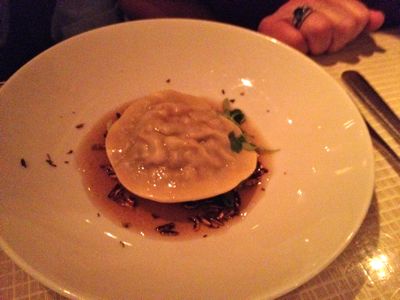 The Problem : Lost Face Time = Lost Joy
The Problem : Lost Face Time = Lost Joy
One day, about 5 years into using the electronic medical record in my practice, I came to the realization that I wasn’t having fun anymore. I was sitting throughout most of every office encounter facing a computer screen, my back to the patient on the exam table across the room. The joy of face to face interaction with people, the real reason I went into medicine in the first place, had been replaced with the more pressing urgency of data entry.
My revisit routine went something like this – I’d enter the room, briefly greet the patient (undressed and sitting on the exam table) and then, apologetically saying “Let me just open your chart”, I’d log on and begin interacting with the more immediately demanding presence in the room – the EMR. I’d turn around as often as I could to look at my patient, but mostly I listened but kept my back to her and I typed. After which I’d rush over to her side, do the exam, then head back over to the computer to make sure I got all her orders, refills and charges in as required. A brief goodbye, and I was on to my next patient.
As more and more mandatory clicks were demanded from the EMR to prove I was a good doctor – smoking history reviewed (click), medication reconciliation (click, click, click,click), problem list review (erase duplicates from ENT , remove resolved problems, add today’s, then click that I had reviewed what I just did) – the actual moments of face time with my patients had become smaller and smaller, till they were almost an annoying distraction from the real task at hand – finishing my charts.
I found myself spending office hours longing for them to be over, and even more sadly, wondering just how many more years I needed to do this before I could retire.
Something had to change. Since the EMR wasn’t going anywhere, it was going to be up to me to make it work.
Renovating the Exam Room was not the anwser
My internist has a patient chair next to the desk in the exam room – I talk with her there, then she leaves the room while I change, then she comes back and does the exam, finally wrapping things up at the desk while I wait in my gown. Then I dress after she leaves.
I thought about pushing for our exams rooms to be renovated, but realized that I probably wouldn’t adopt my internist’s workflow. It just ties up an exam room for too long.
Advance chart prep was not the answer
I tried doing what some of my colleagues do – reviewing the charts of my patients the night before, creating a presumptive note based on her history and the scheduled reason for her visit (when I knew it) , even entering charges and orders for mammograms and birth control pill refills, all of which I could quickly edit and sign tomorrow when I saw the patient, freeing up the encounter itself for more personal interaction.
That idea lasted about a day. While it may work for surgical sub-specialists who hold office hours twice a week to prep charts the night before, it’s impossible for a doc like myself who sees between 15-24 patients a day, 4 days a week. I had to find a way to get today’s work done today (and not at 4:30 am today, which is when another colleague does his chart prep).
Changing office workflow was the answer
I realized that my private office, which sits between my two exam rooms, is arranged so that I can type and look at my patient at the same time. So I decided to reserve all my electronic charting to my office, and leave the exam room to do what it does best – exams.
My patients now come to see me in my office before and sometimes after they’ve been examined – a workflow previously reserved for new patients. It’s a little more complicated for the office staff, but it’s working really well for me and for my patients. We’re both more relaxed and can both look one another in the eye while we talk and I type.
Its not just the office staff who’ve had to get used to the new workflow. Long-time patients can get thrown, despite my staff explaining that this is the new routine. One patient told me she felt like she was being called to the principal’s office. Another was convinced I had bad news for her. Once I explain my rationale, however, my patients are more than pleased with the new arrangement. Some have remarked on how much they like my office, and how its decor and wall art has allowed them to get a better sense of who I am.
Other pluses – I’m no longer wasting precious time logging in and out of the EMR, since my office computer isn’t used by anyone but me. I’m physically more comfortable, and so is my patient. Our wrap up after the exam is that much more personal because I am able to enter her mammogram and refills and even her charges while she changes instead of in the exam room. I remember more of the visit later because I’m more fully present with the patient in the exam room. Finally, there’s less down time for me, since I’ve effectively added a third room to office hours and can see a patient in my office while the other two patients are either dressing or undressing in the exam rooms.
But the biggest upside to my new workflow? I’m having fun! It’s like falling in love with medicine (and my wonderful patients) all over again.
The down side
The down side to my new workflow is that I’ve got to hold everything in memory between the time my patient leaves my office and when she is ready in the exam room, during which I may have seen another patient or two. It can take me a second or two to ascertain who’s behind door number two, and sometimes I get it wrong. Which has led to an embarrassing moment or two when I opened the door with a comment related to a prior conversation in my office and realize the person behind it is not who I was expecting to see. I’ve since learned to keep my mouth shut until I’m entirely in the exam room.
The good old days
In the good old days, I could pick up a chart from the rack outside the door, and in what seems life a few seconds, familiarize myself with my patient’s history (because I kept a great paper chart if I do say so myself…) before opening the door to greet her. During the visit, I could sit with the chart in my lap, jotting down notes as we spoke, my focus on my patient and my thoughts rather than a user interface. Once the visit was over, a few brief jotted notes and some well-placed check marks on the encounter form summarized the visit, a few scribbles on a prescription pad or radiology order form clipped to the chart finished the orders (the rest taken verbally by my tech), a check off or two on the superbill and I was done. The entire work of a patient’s encounter took place in one room (or just outside its door), and in one allotted space of time, during which I was hers and hers alone. My chart was there, sure, but it was not the dominant presence in the encounter the way the EMR is now.
Is the IPad the answer?
I find myself thinking a lot about the Ipad these days. While initially skeptical about its place in healthcare, I’m beginning to think that it may ultimately provide the best workflow solution for me. However, I’m worried about my ability to type into it – something that’s not easy to do standing up. And its compelling interface could be even more of a distraction than the desktop. But its portability could allow me to review a patient’s chart outside the room just like the old days, and things like favorite lists and drop downs in the EMR could minimize typing.
Our EMR vendor at this point only offers a limited version for the Ipad, something that may be useful on call but not robust enough for office hours. So nothing new anytime soon.
That’s okay. I’m happy again. I can wait.
_______________________________________________________________
Pauline Chen,MD wrote about this issue last year in the NY Times. She points out that some docs seem to handle the distraction of the EMR better than others, integrating it more seamlessly into their practice. If you use the EMR and have a workflow that works well for you, tell us about it in the comments.
 Here are a few notes I took while reading Writing That Works, by Kenneth Roman and Joel Raphaelson. This book, written for business writers, and once recommended by famed ad exec David Ogeily to all his employees, also has some great advice for bloggers.
Here are a few notes I took while reading Writing That Works, by Kenneth Roman and Joel Raphaelson. This book, written for business writers, and once recommended by famed ad exec David Ogeily to all his employees, also has some great advice for bloggers.
 Part of me just shrugs my shoulders at the
Part of me just shrugs my shoulders at the 


















































